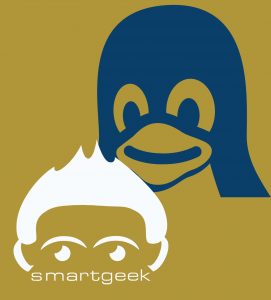

- #LINUX SMARTGIT INSTALL#
- #LINUX SMARTGIT UPDATE#
- #LINUX SMARTGIT FULL#
- #LINUX SMARTGIT SOFTWARE#
- #LINUX SMARTGIT CODE#
#LINUX SMARTGIT UPDATE#
Torvalds cited an example of a source-control management system needing 30 seconds to apply a patch and update all associated metadata, and noted that this would not scale to the needs of Linux kernel development, where synchronizing with fellow maintainers could require 250 such actions at once. Linus Torvalds wanted a distributed system that he could use like BitKeeper, but none of the available free systems met his needs. The same incident also spurred the creation of another version-control system, Mercurial. The copyright holder of BitKeeper, Larry McVoy, had withdrawn free use of the product after claiming that Andrew Tridgell had created SourcePuller by reverse engineering the BitKeeper protocols. Git development began in April 2005, after many developers of the Linux kernel gave up access to BitKeeper, a proprietary source-control management (SCM) system that they had been using to maintain the project since 2002.
#LINUX SMARTGIT SOFTWARE#
Git is free and open-source software distributed under the GPL-2.0-only license.

#LINUX SMARTGIT FULL#
As with most other distributed version control systems, and unlike most client–server systems, every Git directory on every computer is a full-fledged repository with complete history and full version-tracking abilities, independent of network access or a central server. Since 2005, Junio Hamano has been the core maintainer. Git was originally authored by Linus Torvalds in 2005 for development of the Linux kernel, with other kernel developers contributing to its initial development. Its goals include speed, data integrity, and support for distributed, non-linear workflows (thousands of parallel branches running on different systems).
#LINUX SMARTGIT CODE#
Git ( / ɡ ɪ t/) is free and open source software for distributed version control: tracking changes in any set of files, usually used for coordinating work among programmers collaboratively developing source code during software development. POSIX ( Linux, macOS, Solaris, AIX), Windows Primarily in C, with GUI and programming scripts written in Shell script, Perl, Tcl and Python You can not only see what the commit was but the affected files as well. QGit also has an excellent visual representation of your project’s history that’s intuitive to navigate. QGit has been around for a while, and it’s really refined its approach. If Gitg is the GNOME client, QGit is the Plasma/Qt one. Gitg is an excellent option if you’re looking for something simple that fits right in with your desktop. It presents you with the staged changes, and you can easily evaluate them right there and create your commit. Its commit screen is a little confusing at first, but its actually very easy to use once you get the hang of it. Gitg has a great visualization of the project’s history, and it lets you select your branch on the fly. GNOME’s minimalist design choices don’t mean that Gitg can’t do exactly what you need it to. Like many newer GNOME utilities, it’s sort of bare bones in appearance. Gitg is the default graphical Git client for the GNOME desktop. Additionally, GitEye has some neat features that allow you to track the history of a file and manage builds of a project via a build server. GitEye also makes browsing and checking out your branches very simple. It has an excellent file tree browser to the left of the screen. GitEye brings with it a more detailed interface. Instead, it comes packaged in binary form, and you can simply run it from its own directory.
#LINUX SMARTGIT INSTALL#
Interestingly, GitEye doesn’t install on your computer. It may not be open source, but it is freely available and free to use. GitEye is a cross-platform freeware client for Git. It lets you easily visualize the difference between commits in your files, and you can quickly navigate and browse between branches. Each displays a separate aspect of your project’s Git repo. The interface is broken down into four panes. Since it’s open source, it’s also available in most distribution repositories, making it easy to update and maintain. Git Cola is written in Python and features a GTK interface, so it integrates perfectly with most desktops. Git Cola has been around for a decent amount of time, and it’s a classic example of an open-source Linux tool that does exactly what it needs to, without getting bogged down with a lot of unnecessary extras. The following are some of the best graphical Git clients for Linux.


 0 kommentar(er)
0 kommentar(er)
